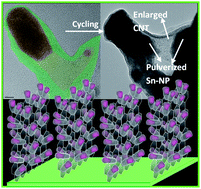An Interview with Professor Makoto Nakamura
If you’re interested in the fascinating new field of bioprinting and biofabrication, you won’t want to miss the keynote presentation by University of Toyama’s Professor Makoto Nakamura. His presentation, The Concepts of the Challenges for the Developments of Bioprinting and Biofabrication, will examine the innovative printing techniques that are now being used in tissue engineering. In today’s blog, he shares some of the points he will cover in his keynote speech.
The inaugural International Bioprinting Congress will take place at the Biopolis, Singapore on 24-25 July 2014. The event will present the leading international scientists and thought leaders within the rapidly developing field of 3D bioprinting.
SELECTBIO: What are some of the challenges you’re finding in your research on bioprinting and biofabrication?
Nakamura: Our team has ever pursued several challenges on tissue engineering, towards the final goal of engineering biological artificial organs which can be used for clinical therapy for disease patients. Our challenges concerning to bioprinting and biofabrication are as follows.
First, we ask how can we position or assemble living cells directly onto arbitrary positions. Specifically, we’re examining high resolution as biological histology; respect cell-type onto respect cell positions; both 2D and 3D space, especially together with inner compositions; and, high speed positioning or fabrication.
Second, we ask what kind of machines or technologies are feasible to produce biological tissues and organs. Within this area, we find many advantages in printing technology, which forms the beginning of our research on bioprinting. Third, we ask how we can make effective perfusion systems such as capillary vessels in the fabricated large 3D tissues.
And, finally, we examine recent challenges such as searching suitable biomaterials for biofabrication and version-up of our 3D bioprinter. However, producing biological tissues–especially alternatives for transplantation- is not easy. Therefore many challenges must be addressed until our final goal can be achieved.
SELECTBIO: What are some of the limitations of mechanical artificial organs that biofabricated artificial organs resolve?
Nakamura: Mechanical artificial organs have contributed to saving many patients indeed, so I think they are necessary and they still need further development. I’d like to emphasize that it is important to understand that the research on mechanical artificial organs is very necessary. However, there are still no cues to compensate metabolic functions of biological cells and tissues by mechanical artificial organs, such as energy generation in vivo, hormone generation and detoxification in vivo. Therefore, energy must be transferred almost continuously from outside of the body for an artificial heart, while a dialysis patient must be connected to a machine that dilutes waters in the case of an artificial kidney. In addition, artificial organs never grow up along with children when they grow up. My hope is to develop a pediatric artificial heart to address one of the more serious problems in mechanical arti ficial organs.
SELECTBIO: Your research has involved the heart; is this really an organ that can be biofabricated?
Nakamura: Of course, I think so, but it is in future. Although it is indeed a very difficult theme, I believe it can be achieved through science and technology some day.
SELECTBIO: You have been closely involved with the International Society For Biofabrication (ISBF) as an inaugural board member. What are the goals of the ISBF?
Nakamura: As far as I understand, the goal of ISBF is as follows:
1. The most important purpose of ISBF is to promote the research and development of biofabrication worldwide. However, why is such biofabrication research necessary? The most essential point of fabricating biological products is to fabricate and produce human tissues and organs to contribute to the development of the medicine, not only basic but also clinical medicine. This is essentially the same as tissue engineering. Therefore, ISBF aims at this final goal.
2. To achieve this, interaction or collaboration with different disciplines in other different fields is necessary, because biofabrication is a new approach. Hence, ISBF actively searches for synergies with other fields.
3. In addition, application of biofabricated products to basic and clinical medicine, and all of the life science areas, is important, as well as interaction and collaboration. Moreover, industry is also important, because basic technologies must be connected to industrial applications to produce practical products. While a non-profit organization, ISBF nevertheless promotes interactions for contributing to biofabrication applications.
4. ISBF is an academic society. Therefore, ISBF is active in the education of young scientists and students.
These are not the official position of the ISBF, but my understanding as a member of ISBF.
SELECTBIO: What do you consider your greatest success in this field?
Nakamura: My great success? It is difficult to evaluate my works by myself! I have proposed that printing technologies are a promising avenue to develop 3D tissue engineering by showing 3D bioprinting using an inkjet technique. Although other researchers are also working on bioprinting solutions, our works on bioprinting and biofabrication have influenced many Japanese engineers and researchers to work in the field of printing technologies, MEMS technologies and mechatronics technologies, as well as regenerative medicine.
SELECTBIO: How do you envision bioprinting and biofabrication evolving in the future?
Nakamura: I hope and believe that the time when human tissues and organs can be produced by computer-aided machine technologies and process engineering will come some day.
Comments Off on An Interview with Professor Makoto Nakamura















